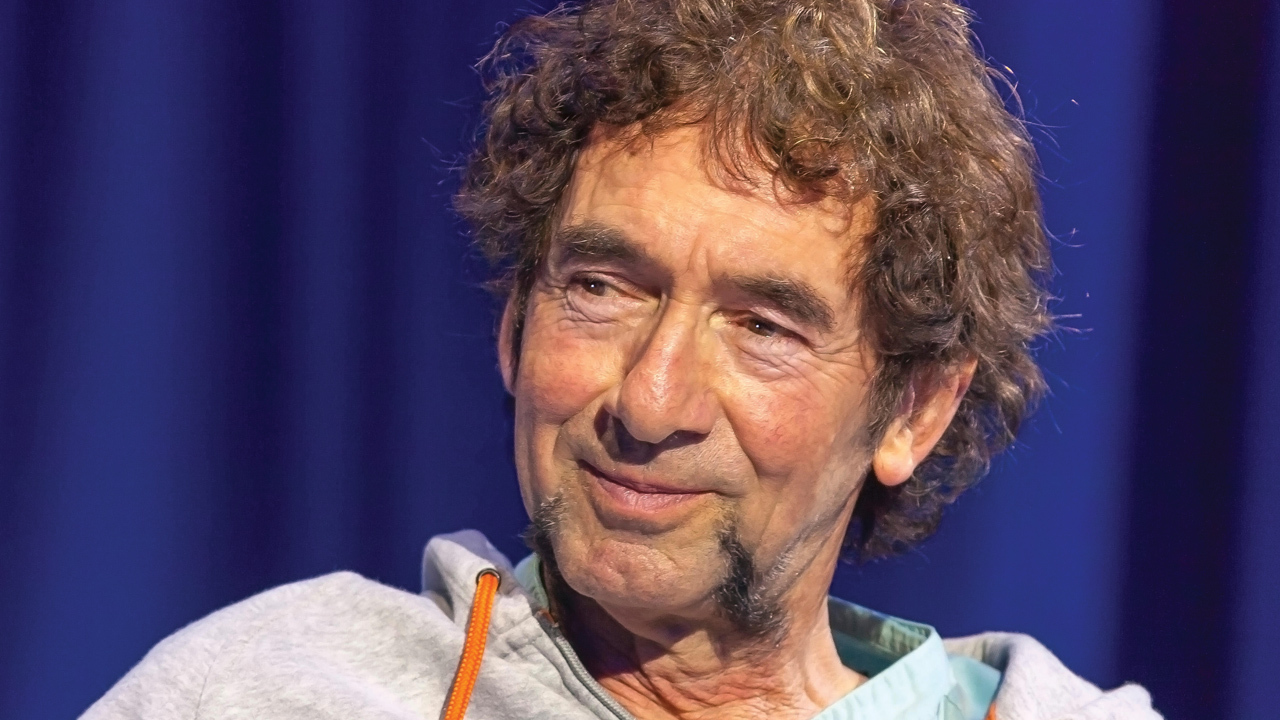“The blues was a vibe, a feeling, a rawness, a thrill. My first encounter came through two albums that my stepfather brought home. One was Elvis Presley’s first album, and the other was Rock And Rollin’ With Fats Domino. I loved these records as a young kid. The sleeve notes on the Elvis album began: ‘The jazz phenomenon to end all phenomena, the record breaker to end all record breakers, is a slim six-footer from Mississippi, USA named Elvis Presley.’ I was puzzled because the cover was talking about rock’n’roll. On the back of the Fats Domino LP, it said ‘blues lies at the heart of jazz’, and I thought, ‘but I’m listening to Fats rocking and rolling’. So that’s how I became aware of ‘blues’ and ‘jazz’. Blues does lie at the heart of jazz and at the heart of rock’n’roll.
“I’d seen Big Bill Broonzy on TV with a cigarette dangling in his mouth and he was playing Hey Hey, this lovely boogie guitar thing, and it blew my mind. At 14 I bought a Big Bill Broonzy EP and on it is a great number called Get Back [Black, Brown And White]: ‘If you’re white you’re alright, if you’re brown stick around, but if you’re black, oh brother, get back, get back.’
“A lot of British music in the 50s – aside from Lonnie Donegan, who was doing Lead Belly – was not very exciting. If you can imagine someone like Dickie Valentine commanding the airwaves in the mid 50s, and then you hear Hound Dog – it’s a deliverance, an earthquake, a revolution. This was excitement, this was freedom, this was wildness. It was alien to British culture, which was so prim and music hall. And here [holds up Elvis LP cover] we had raw, untamed sex. You’re moved by these things because they’re coming from the heart. They should really call it heart music.
“I went to the Folk Blues Festivals at Fairfield Halls in Croydon, in 1963 and 1964. After the show I went to the tour bus and got autographs from Willie Dixon, Sonny Boy Williamson and Sister Rosetta Tharpe. Sonny Terry had a rubber stamp that said ‘Yours truly’, because he couldn’t write. Big Joe Williams’ autograph was just three crosses. It was so special that they’d come to England and inspired a generation of white kids to form bands.”
FATS DOMINO – The Fat Man (IMPERIAL)
This was the biggest moment of all for me. I bought it on an EP in 1959 from our local record shop in Morden. I asked the girl in the shop to play it to me. There are so many things about it that I love. His piano playing is in a very humble style but it’s so intricate. There’s a terrific hook melody and then this voice erupts – it’s a towering moment and such a great piece of blues shouting, even if I had no idea what he’s singing about. A crazy piece of music from 1949, seven years before rock’n’roll.
ELVIS PRESLEY – My Baby Left Me (RCA VICTOR)
‘Play that blues boy!’ Elvis knew about the blues. It’s a curious marriage, these country and western hillbilly guys backing this hard black-style delivery. I heard it for the first time when I was 12 or 13. Some years later I ended up playing the piano for Arthur ‘Big Boy’ Crudup, who wrote this song and That’s Alright, Mama. Elvis was brave to do what he did, helping to introduce black music to white listeners at a time of segregation. When punk came along and I was signed to Stiff, I was in The Vortex club the night Elvis died. When the DJ announced it, the punks cheered. It was awful, like a nightmare. I went home and wrote a song called Elvis Presley Was The First Punk.
BARBECUE BOB – Motherless Child Blues (FONTANA)
Our neighbour was a Chris Barber fan and sometimes we’d go round there as a family and have an evening of drinks. He would play jazz very loud and this was on an LP called Nothin’ But The Blues. There’s so much emotion in it and it’s an example of the freedom that country blues could give musicians – it’s not a strict 12-bar. His 12-string guitar is slightly out of tune but beautifully so, and the singing is fantastic – a high, woman-type voice, like Blind Lemon Jefferson. Although he’s only strumming the guitar there’s a great trick in his rhythmic playing, it’s just a gorgeous sound. Eric Clapton did a very good version.
SLEEPY JOHN ESTES – Special Agent (DECCA)
It’s the country blues where you’ve really got the idiosyncrasies and the originality. I first heard this in 1959, aged about 12. It’s a highly personal song from Sleepy John – ‘I sure was feeling bad’. It’s a difficult track to get hold of melodically, it’s so unique and so individual to him, his own personal expression. This guy went off at a tangent and came back in with his own shared language.
BIG MACEO MERRIWEATHER – County Jail Blues (BLUEBIRD)
What struck me about this the most was that here was a melody. You could say that a lot of blues doesn’t necessarily have melody. It has feelings, sincerity, rawness – but melody, not so much. I love his singing and it has Tampa Red on guitar. Dave Brock introduced me to this when we hung out together a bit, before he formed Hawkwind. He was telling me, “I wanna form a band, blues and beyond.” Silver Machine, now that was an example of blues and way beyond!
HENRY THOMAS – Bull Doze Blues (ORIGIN JAZZ LIBRARY)
This is a beautiful number from an LP called Henry Thomas Sings The Texas Blues!. This was reworked by Canned Heat as Going Up The Country. It’s so earthy, rustic – and that high ‘woman’ voice again. The little flute is really poignant. It inspired a song of my own that was called The Swan.
ELMORE JAMES – Coming Home (VEEJAY)
I bought this on a compilation album from Dobells record shop in Charing Cross Road. It paved the way for singers like Little Richard, with the high, slightly churchified vocal. It’s a simple riff but Elmore’s distorted guitar sound gave white rock its big moment. This is probably where people like Pete Townshend and Free [with All Right Now] got the idea for their own guitar distortion.
Jona Lewie will release a new album and tour in 2016. See www.jonalewie.com for more information

